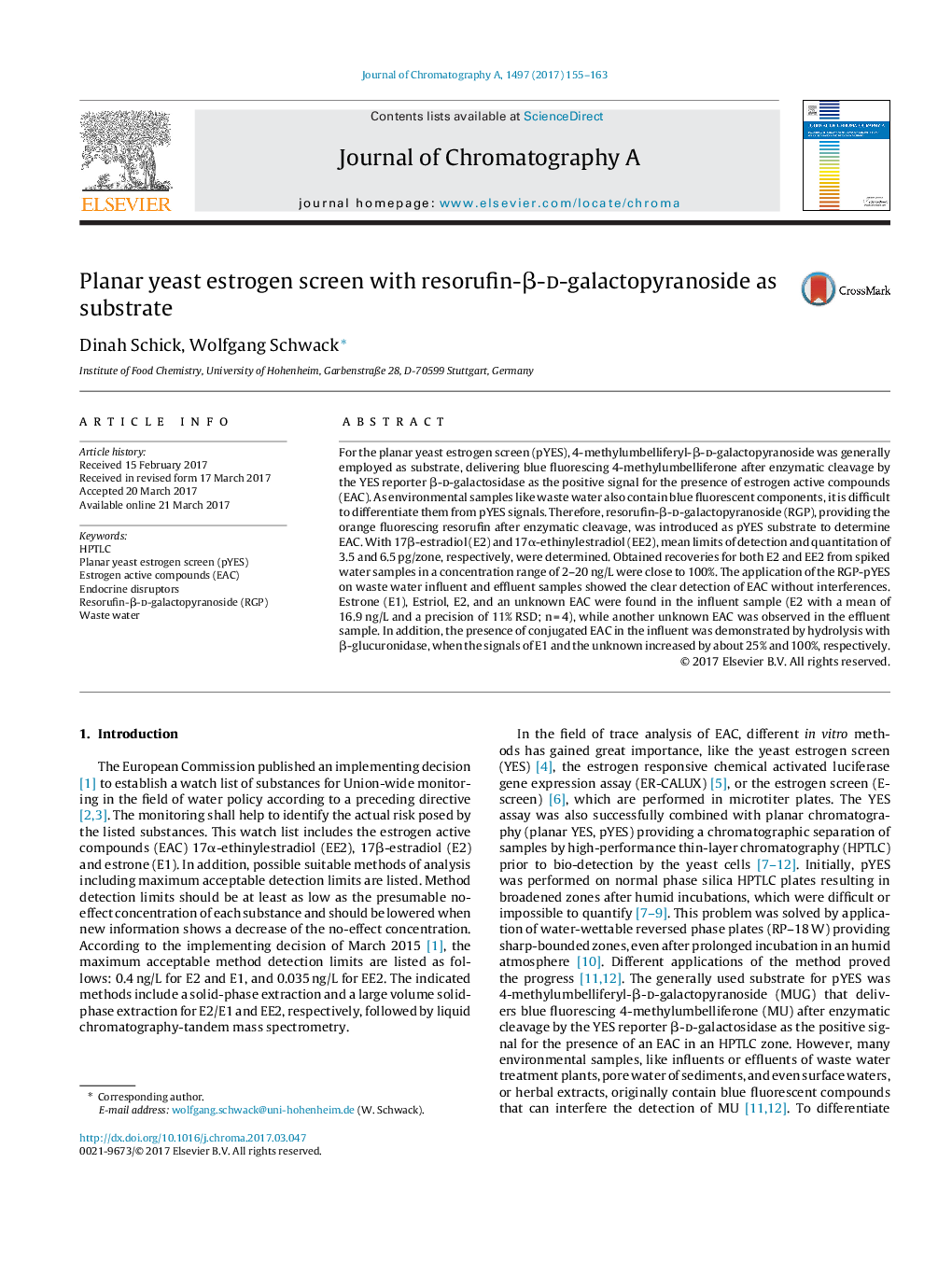| کد مقاله | کد نشریه | سال انتشار | مقاله انگلیسی | نسخه تمام متن |
|---|---|---|---|---|
| 5135553 | 1493429 | 2017 | 9 صفحه PDF | دانلود رایگان |

- A planar yeast estrogen screen for the determination of estrogen active compounds was developed.
- Resorufin-β-d-galactopyranoside was introduced as suitable substrate for pYES.
- Recovery rates for 17β-estradiol and 17α-ethinylestradiol in water samples after liquid-liquid extraction were near to 100%.
- HPTLC-FLD was possible without interferences by native fluorescences of sample components.
- pYES was successfully applied on waste water samples (detection of free and conjugated estrogen active compounds).
For the planar yeast estrogen screen (pYES), 4-methylumbelliferyl-β-d-galactopyranoside was generally employed as substrate, delivering blue fluorescing 4-methylumbelliferone after enzymatic cleavage by the YES reporter β-d-galactosidase as the positive signal for the presence of estrogen active compounds (EAC). As environmental samples like waste water also contain blue fluorescent components, it is difficult to differentiate them from pYES signals. Therefore, resorufin-β-d-galactopyranoside (RGP), providing the orange fluorescing resorufin after enzymatic cleavage, was introduced as pYES substrate to determine EAC. With 17β-estradiol (E2) and 17α-ethinylestradiol (EE2), mean limits of detection and quantitation of 3.5 and 6.5 pg/zone, respectively, were determined. Obtained recoveries for both E2 and EE2 from spiked water samples in a concentration range of 2-20 ng/L were close to 100%. The application of the RGP-pYES on waste water influent and effluent samples showed the clear detection of EAC without interferences. Estrone (E1), Estriol, E2, and an unknown EAC were found in the influent sample (E2 with a mean of 16.9 ng/L and a precision of 11% RSD; n = 4), while another unknown EAC was observed in the effluent sample. In addition, the presence of conjugated EAC in the influent was demonstrated by hydrolysis with β-glucuronidase, when the signals of E1 and the unknown increased by about 25% and 100%, respectively.
Journal: Journal of Chromatography A - Volume 1497, 12 May 2017, Pages 155-163